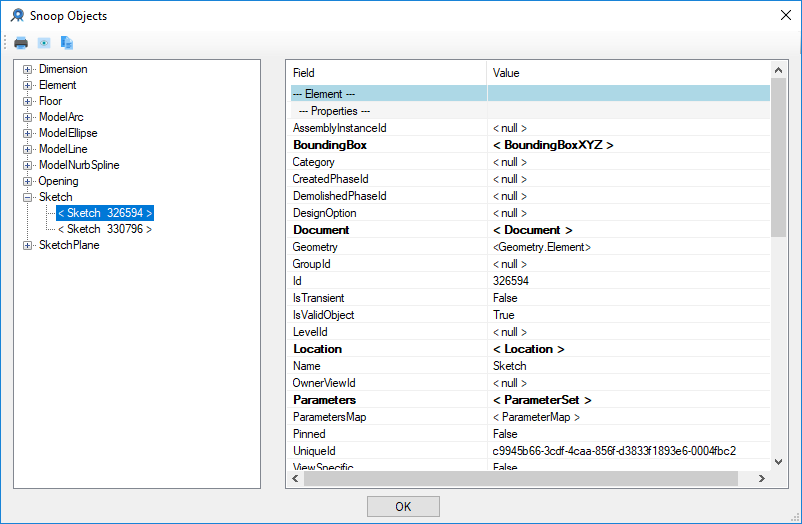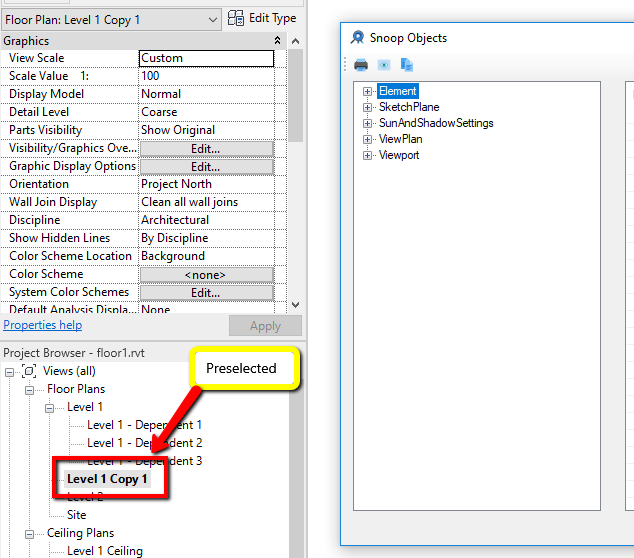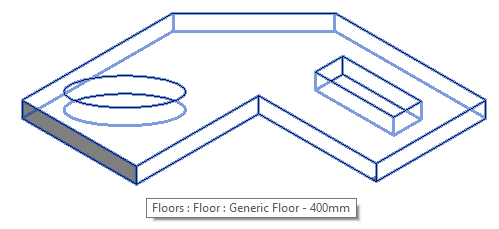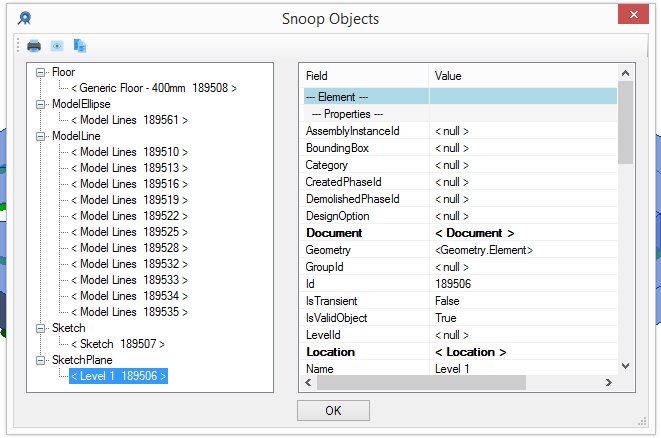
Håvard Leding of Symetri already made some exciting contributions here, adding RevitLookup commands to snoops edges, faces and links and exploring stable reference relationships.
Now he raises another exciting topic on using the the GetDependentElements method to retrieve and snoop dependent elements, e.g., the sketch of a floor and the model lines defining the floor boundary in that sketch.
Some previous related discussions include use of the temporary transaction trick to the change the boundary of floor slabs and editing a floor profile.
In Håvard's own words:
GetDependentElements method CmdSnoopModScopeDependents We were talking about getting the boundaries of a floor through the Sketch element.
The Revit 2019 API provides a new helpful method for this:
The Element class has a method GetDependentElements taking an ElementFilter argument that returns 'elements which will be deleted along with this element'.
It is listed in What's New in the Revit 2019 API under Find Element Dependencies:
The new method
Element.GetDependentElementsreturns a list of ids of elements which are 'children' of this element; that is, those elements which will be deleted along with this element. The method optionally takes anElementFilterwhich can be used to reduce the output list to the collection of elements matching specific criteria.
That includes the Sketch element with the profile containing the boundary lines of a floor.
So, to get the boundary lines of a floor, wall or anything else that you can sketch, you can do this (it might also apply to things like Crop Boundaries – not sure):
ElementClassFilter filter = new ElementClassFilter( typeof( Sketch ) ); IList<ElementId> dependentIds = e.GetDependentElements( filter ); foreach( ElementId id in dependentIds ) { Element depElem = doc.GetElement( id ); if( depElem is Sketch ) { return depElem as Sketch; } }
Then you can get the boundaries in a CurveArrArray from the Sketch.Profile.
A well as references to each CurveElement; for a floor, those would be model lines.
Taking separate openings and cuts into account, these boundaries may not be the visible shape of the element, like doors or windows, if the element is a wall.
This goes a long way.
This could be a new Revit Lookup command :-)
Passing null as ElementFilter to get all ids.

Here is the result after picking a floor:

I realised one thing.
As you can see, there are two Sketch elements listed.
That is because the floor has an opening, which in turn has its own sketch.
So, it will take some elimination to get the sketch for the floor itself, but very doable.
Here is a RevitLookup command implementation set up to process a preselected element:
/// <summary> /// Snoop dependent elements using /// Element.GetDependentElements /// </summary> [Transaction( TransactionMode.Manual )] public class CmdSnoopModScopeDependents : IExternalCommand { public Result Execute( ExternalCommandData cmdData, ref string msg, ElementSet elems ) { Result result = Result.Failed; try { Snoop.CollectorExts.CollectorExt.m_app = cmdData.Application; UIDocument uidoc = cmdData.Application.ActiveUIDocument; ICollection<ElementId> idPickfirst = uidoc.Selection.GetElementIds(); Document doc = uidoc.Document; ICollection<Element> elemSet = new List<Element>( idPickfirst.Select<ElementId, Element>( id => doc.GetElement( id ) ) ); ICollection<ElementId> ids = elemSet.SelectMany( t => t.GetDependentElements( null ) ).ToList(); Snoop.Forms.Objects form = new Snoop.Forms.Objects( doc, ids ); ActiveDoc.UIApp = cmdData.Application; form.ShowDialog(); result = Result.Succeeded; } catch( System.Exception e ) { msg = e.Message; } return result; } }
Implementing the preselection enables a view to be selected in the project browser and snooping that.
For instance, here is the result of snooping a level:

Ever so many thanks to Håvard for this great suggestion and implementation!
I integrated Håvard's enhancement into RevitLookup release 2019.0.0.9.
Here are two screen snapshots from my sample run, selecting this floor with two holes, one of them elliptical:

CmdSnoopModScopeDependents lists the following dependent elements:

I hope you find this useful and wish you lots of fun and success experimenting and enhancing further.